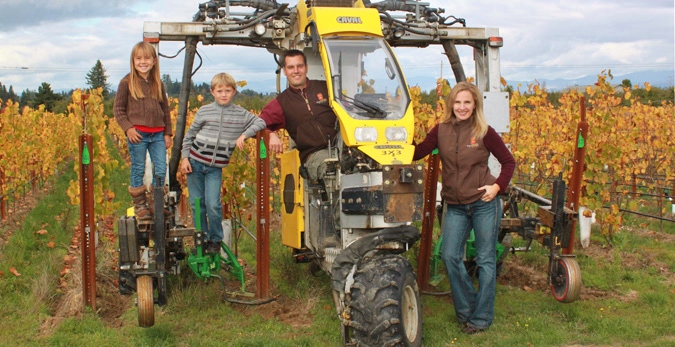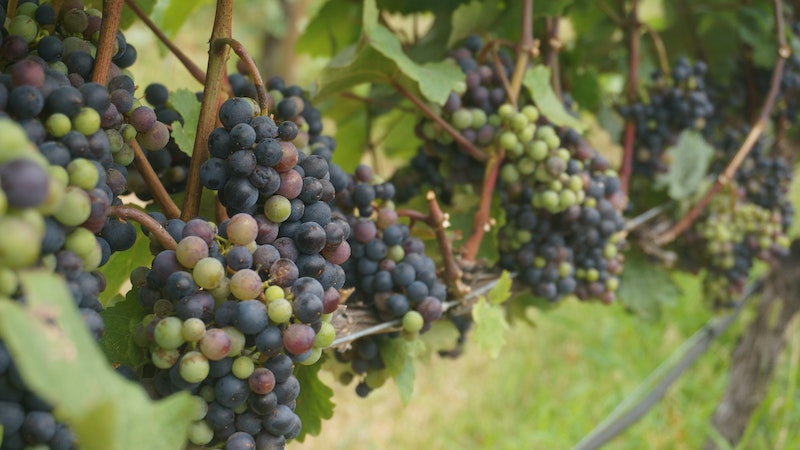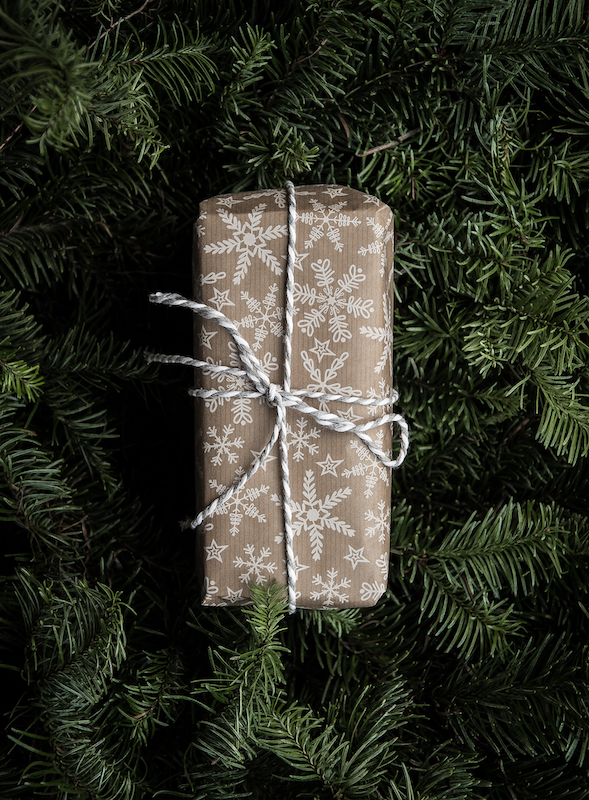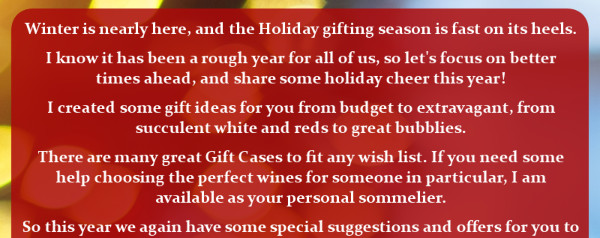Winegrowers are using trees, hedgerows, and habitats to mitigate climate change, helping not just the environment, but also the health of their vines
 |
Abadía Retuerta manages its forest sustainably.
Photo courtesy of Abadía Retuerta. |
On a recent morning, winemaker and owner Julie Johnson shows off the scruffy edges of her vineyard and the hedgerows lining the driveway at Napa’s Tres Sabores. “I have 15 varieties of pomegranate,” she says. “They bring hummingbirds, and hummingbirds eat insects. Some kind of sage is always blooming and bringing in beneficial predators. California buckwheat is great for pollen. The lavender isn’t native, but it’s drought tolerant, and bees love it. The dill looks messy, but it’s a feast for beneficial wasps.”
Everywhere surrounding Johnson’s organic grapes, other flora and fauna thrive. The estate is cacophonous with birdsong and insect buzz and scented by herbs and flowers. The oak forest climbing the hill behind the vines is home to bobcats and mountain lions. Foxes visit the crush pad. “It’s wild and raucous and untamed, but there’s great potential,” says Johnson. “I have 52-year-old, dry-farmed vines. The ecosystem helps them.”
Tres Sabores is an exemplar of the practice of agroforestry, defined by the United States Department of Agriculture (USDA) as “the intentional integration of trees and shrubs into crop and animal farming systems to create environmental, economic, and social benefits.” This form of farming is slowly coming into vogue, as climate emergencies and soil science have collapsed the belief in a required separation between farm fields and natural habitat. Though Johnson has been nurturing biodiversity since Tres Sabores launched in 1999, her understanding of estate management has evolved with the times.
“I’ve always loved growing things that complement the vineyard,” she says. “And, as it turns out, it’s imperative that we weave this web of hedgerows and trees and native plantings into our monoculture.”
Reembracing an Ancient Practice
In fact, agroforestry on vineyards is nearly as old as winemaking. The ancient Roman system called Arbusta used trees as living trellises, a practice still employed in places such as Bolivia. Before mechanization, European vineyards often incorporated orchards. Under modern monocropping, however, agroforestry fell away. With the need to address climate pressures and growing interest in sustainability, the practice is coming back.
In Bordeaux, wineries including the fabled Château Cheval Blanc have embraced it. Southeast of Bordeaux, the 160 winemakers of Les Vignerons de Buzet are engaged in a study of agroforestry’s impact on soil health. In Sicily, the Fondazione SOStain Sicilia is encouraging agroforestry in vineyards. Katherine Favor, an agriculture specialist at the National Center for Appropriate Technology (NCAT), reports seeing the practice implemented on vineyards in Argentina, Portugal, Spain, Greece, Iran, and Nepal.
 |
Julie Johnson, the owner and winemaker at Tres Sabores in
Napa Valley. Photo credit: Briana Clark Forgie. |
As for the United States, Favor explains, “The National Agricultural Statistics Service survey currently only asks one question about agroforestry, and that is, ‘Is agroforestry currently being practiced on your farm?’ Because this question is limited, there is at this time no way of knowing how many vineyards in the U.S. employ vineyard agroforestry systems.”
Data from the most recent survey, conducted in 2022, is yet to be available, and only 1.5 percent of U.S. farms reported using agroforestry in the 2017 survey, a statistic that researchers admit is likely underreported. Moreover, no statistical breakdown exists to separate vineyards out from other types of farms.
The practice is starting to take hold in
wine country, however. In California, the state with the most vineyards, the county with the largest number of farms using agroforestry is the grape-growing hotspot of Sonoma, where 125 farms, or 3.5 percent of all agricultural properties, answered the survey affirmatively. In Mendocino, 6.1 percent of farms reported employing the practice. There, in the Anderson Valley, viticulturalists are working with conservationists to use agroforestry to battle drought. Sustainability-driven estates in Napa and Paso Robles are also implementing the methods. Innovative growers in these and other key regions are turning to trees and shrubs for the good they provide to vines, wine, and the environment.
Organic Control of Vineyard Pests
According to a report from the Food and Agriculture Organization of the United States, the planet has lost more than a billion acres of forest in the past 30 years, chiefly to agriculture. In the continental U.S., 60 percent of land is in crops and ranching, says Jo Ann Baumgartner, the executive director of the Wild Farm Alliance (WFA), “so we have to bring nature back to the farm if we want nature to survive.”
Baumgartner’s organization promotes farming that supports native species and ecological processes that, in turn, support farms. “There are three billion fewer birds in North America than in 1970,” says Baumgartner. But birds provide a crucial ecosystem service. Research at Napa’s Spring Mountain Vineyard showed Western bluebirds ate significant amounts of vine-harming insects. Research at Tres Sabores and elsewhere revealed that one family of barn owls eats 3,500 vine-munching rodents annually.
“If birds help with pest control, then farmers must help them make it. If we don’t support biodiversity, it will continue to decline,” says Baumgartner. “We benefit from [biodiversity] so why wouldn’t we bring it in?”
Though bluebird, barn owl, and kestrel boxes like Johnson’s are among Baumgartner’s tools, so are plantings. The WFA aims to plant half a million miles of native trees and shrubs on U.S. farms by 2050. Hedgerows offer food and cover for birds and bats. In Bordeaux at Château Lestrille, winemaker Estelle Roumage found that planting native shrubs lured 11 species of bats, voracious eaters of the insects that inhabit plants.
At Bonterra estate in Mendocino runoff channels are lined in fruit trees and flowering shrubs. Though vineyards are self-pollinating, the fruit trees support pollinators for cover crops and crops on neighboring properties. They also welcome parasitoids, lady bugs, and other species that feed on vineyard pests, and provide pears and apples for workers. “We’ve taken something mundane, like moving rainwater off the hillside in a drainage ditch, and turned it into something that’s functional, gorgeous, and adds to the whole experience,” says winemaker Jeff Cichocki.
Native trees and shrubs can bring in harmful insects, too. “You have an explosion of biodiversity, so you have potentially more vine parasites,” says Jean-Baptiste Cordonnier, who manages his Bordeaux estate, Château Anthonic, with a similar approach as the winemakers at Bonterra. “But they are under control because they have predators.”
 |
Bats boxes provide shelter and homes for bats
that can eat thousands of insects daily.
Photo courtesy of Luke Carver.
|
Forests support larger predators. More than half of Bonterra’s acreage is covered in native-planted riparian zones, woodlands, and other wild areas, where “wolves, coyotes, and foxes find a home,” says Joseph Brinkley, Bonterra’s director of regenerative agriculture. “They help control moles, voles, and possums. Hawks, golden eagles, and bald eagles by the river also control rodents.”
Some winemakers argue that even non-native trees provide habitat. Mendocino’s Filigreen Farm, a biodynamic estate for row crops, wine grapes, and other fruit, incorporates native forest. “But the agricultural landscape is primarily a European invention, so I’m not trying to make a native landscape,” says Christopher Tebbutt, Filigreen’s farmer. “We experiment with different things,” including eucalyptus, a 19th-century introduction that researchers consider invasive. “People don’t like it, but as a crop for bees, it can’t be beat for a dry climate.”
Climate Mitigation and Protection
On the macro level, forests draw down greenhouse gasses. “As we saw in our last soil study, our wild lands are incredible carbon sinks above and below the surface,” says Brinkley. But agroforestry also offers more-immediate climate benefits to vineyards. According to José Rey Benayas, the president of Fundación Internacional para la Restauración de Ecosistemas, which is helping bring birds and bats back to estates like Spain’s Abadía Retuerta, where 865 acres of woodland surround 370 acres of vines, one function of hedgerows is “diminishing the velocity of the wind.”
At Bonterra, the insectary plantings break the hot, dry gusts, which can desiccate grapes. They also curb the dust, which, explains Brinkley, is “a big contributor to the mite population, so we don’t have mite outbreaks.”
Hedgerows are used to moderate climate extremes at Château Lestrille, too. “The temperatures in winter don’t go so low, and in summer they don’t go so high around the hedges,” says Roumage. “It does have an influence on the vineyard.”
At Alexander Valley’s Medlock Ames the oak woodlands catch neighboring pesticide drift, providing what cofounder Ames Morison calls “a buffer between our organic vineyard and the conventionally farmed [land] on the other side of it.”
Trees also offer leaf cover, an attribute once anathema to vineyards. At the 910-acre Navarro Vineyards in Anderson Valley the vine rows are “islands surrounded by forest,” says winemaker Sarah Cahn Bennett. The trees were not originally preserved for climate mitigation, but now, they provide that service. “With climate change, shade is becoming a more popular concept in grape growing,” she notes.
Indeed, UC Davis researchers argue that Napa could benefit from the vine-leaf cover of high-wire trellising used in places like Mendoza, Argentina, to decrease UV exposure. Tree cover, though not as uniform, can function similarly. Tres Sabores’ oak forest climbs 2,000 feet above the vineyard. “During harvest,” says Johnson, “the grapes are in shade from about 5 pm on, so they recoup and cool down”—a refresher that’s “really great” for the
wine.
Promoting Soil Health
Trees and shrubs also bring benefits through their roots. Raised on a biodiverse, organically farmed estate, Cordonnier did his studies in agricultural engineering, specializing in tropical forests. He returned to Bordeaux in 1993 to find Château Anthonic “almost like a desert.” Rot pressures had forced his father to use chemicals. “The reasons were good, but the decisions were not,” says Cordonnier.
Cordonnier halted the herbicides and tried cover cropping and composting, but “it was almost impossible to increase the biodiversity,” he says. Then he planted 100 meters of hedge. “The result was impressive. In one year, we had garter snakes again.” So, he installed four kilometers of hedgerows, connecting them to the estate’s forests.
 |
Château Anthonic’s four kilometers of hedgerows i
ncreased biodiversity, bringing back birds and insects,
as well as offering protection against wind.
Photo courtesy of Château Anthonic. |
“It is a corridor for biodiversity,” he says. “Birds and insects came back. Most important, but less visible, was the fungus growing on native shrub roots.” In 2017, a frost killed his grapes, and the only
wine they produced that year was from the rows close to the hedges. They had protection against cold winds, but also, the microbiome made them more resilient. “The shrubs were making mycorrhizal links with the vines,” Cordonnier says. “It was a strong influence on their health.”
Nowadays, Cordonnier’s vines are never more than 15 meters from a tree to facilitate the mycorrhizal network. “When hosted on the roots of a plant, the fungi bring water, minerals, antibiotics, and all the molecules that vines can’t produce from the soil to the vine. These help the vine fight rot,” he says. “The vines produce sugar, and fungi cannot do that, so they share sugar with the fungi. It’s a win-win. We were making vines that were orphaned from fungi. Now we’re bringing it back, and the vines are more resistant.”
A survey of peer-reviewed studies has shown the positive impact of trees on vineyard soil structure and water retention “The trees are still young, but altogether, the ecosystem has an impact on the
wine,” says Cordonnier. In the hot, dry 2019 and 2020 vintages, Cordonnier’s neighbors ended up at 14.5 percent alcohol, while his level was 13 percent.
The grapes’ freshness is also due to trees’ transpiration. “They take water from deep and evaporate it in their branches. They refresh the vineyard,” Cordonnier explains. “Right now it’s 35 degrees celsius outside, but inside the parcels, it’s 32.”
In drought-prone regions, adjacent forests help “recharge the aquifer,” says Morison. “When it rains, the tree canopy breaks the raindrops’ energy, so they’re not hitting bare soil and running off. Trickling down the trunk, the water is softer and more likely to sink into the ground.”
Heath Payne, the viticulturist at Oregon’s heavily wooded Abbott Claim estate, agrees. “Trees are a tremendous resource for water conservation,” she says. “They hold water higher in the soil strata. That’s a benefit for the soil, fire maintenance, and long-term resilience.”
Proper Forest Management
Planting trees in fire-prone areas might seem counter-intuitive, but for winemakers committed to agroforestry, fire prevention is a matter of integrating the woods into their management plan. “If you asked me 20 years ago,” says Cahn Bennett, “I would’ve said I never want to do anything to Navarro’s forest. But with sudden oak death, drought, and fire danger, managed forests can be environmentally friendly. For fire safety and creating a healthier forest, there are advantages to bringing down dead trees, laying them on the ground, and replanting.”
At Medlock Ames, Morison learned the hard way. In 2019, the Kincaid Fire sped through the vineyard’s dense forest and grasslands. With the help of forestry consultants, Morison has come to understand the need to clear his forest floor. “The way Native Americans have managed those landscapes is by using small fires as a tool to open up land and avoid large fires,” he says. “But we’ve suppressed fires not realizing occasional fires are healthy. We had an understory of shrubby plants that made fires much hotter. Now we’re thinning them close to tree trunks, so the next time there’s a fire, which is normal, it won’t be as damaging.”
Morison chips burnt trunks for compost, biochar, and mulch to curb erosion on bare soil exposed by the Kincaid Fire. At Bonterra, a fringe benefit of forest management is firewood for employees, while in the Anderson Valley, Linda MacElwee of the Navarro River Resource Center uses Douglas fir saplings cleared from encroaching on oak woodlands to replenish the local watershed.
“Studies show that smaller trees from legacy forestry practices use additional water. Reducing those trees shows improved river flow,” she explains. MacElwee places the logs in gulleys on forested hillsides above vineyards “to capture sediment, slow water, and hold it longer in the system. The result is fire preparedness for vineyards and improved water security for everybody.”
Winemaking Benefits and Visitor Attractions
The environmental benefits are robust, but the question remains: Do agroforestry practices lead to better wine? In a 2021 experiment conducted in Mendoza, NCAT’s Katherine Favor found that planting olive trees within vineyards led to lower yields but higher-quality must. “I’m getting fresher wine with lower alcohol and higher acidity,” Cordonnier concurred.
 |
Domaine R. Dumont & Fils in Champagne hosts
truffle hunts in its surrounding oak forests.
Photo credit: Clara Ferrand, courtesy of Domaine R. Dumont & Fils. |
Other producers note trees’ flavor influence. “I have a vineyard that has pepperwoods all through one side, and the
wine obtains some of those aromas,” says Cahn Bennett,
Payne argues that, although Abbott Claim grows only
Pinot Noir, it’s “not just a mono-expressive vineyard,” in part because its varied forests “express strong components of the terroir.” In the afternoon, for example, a Douglas fir stand at the top of the property “pumps cool air over the block, acting as an air conditioner.” Grapes there are “more ethereal in their profile.” Cichocki similarly points to the way that agroforestry “improves the overall health of the vineyard,” supporting “a more balanced vine” that yields “good fruit” with “ripe, concentrated flavor.”
Along with the enjoyment of the wine is the experience of the estate as a whole. At Champagne’s Domaine R. Dumont & Fils, the oak forest surrounding the vineyards is an economic driver. It’s the site for hosted truffle hunts that lure visitors to the estate’s sleepy corner of the Côte des Bar. Aly Wente sees the wooded preserve at Wente Vineyards in Livermore Valley, California, as a marketing vehicle. “It’s about putting power in consumers’ hands,” she says. “We’re doing programs with our consumers planting trees for all the bottles we’ve sold.”
At Abadía Retuerta,
wine tastings take place under a historic tree’s canopy. Binoculars and a hiking map detailing animals and agroforestry landmarks are available for visitors. As a destination resort, it’s on trend for contemporary wine travel. “We use the forest as an experience for our guests,” says managing director Enrique Valero. “In the past, guests wanted to be in the winery. Now they spend hours in the vineyard talking about the birds.”
It’s not only the guests who are inspired by the biodiversity that agroforestry brings. “My team doesn’t want to go back to the old system. Their job is more diverse now. They are more passionate,” says Cordonnier. “I was traveling, and I received photos from workers who were observing an owl hunting in the next row. It enhanced their day.” The benefit to their boss? “Now my team wants to stay to see the results of our work, so we have less turnover.”
Building Long-Term Resilience Beyond ROI
If agroforestry is so good for vineyards and the wider environment, why isn’t the practice more widespread? Researchers for the USDA Forest Service found a number of disincentives to the practice. Among these are the time and labor needed to implement complex agroforestry systems. “You have to adapt your pruning, and that’s a lot of teaching for your workers,” says Cordonnier.
He also corroborates another Forest Service finding: the lack of widespread information and training on agroforestry practices in the U.S. and Europe. “Agroforestry is not taught in agronomic schools today,” he says. “When you make a technical diploma to be a viticulturist, you don’t have a single hour [of learning] about it.” In the Médoc, where Cordonnier’s estate is located, he is working with a group of like-minded owners to set up a small training facility to “spread the method faster.”
Then there is the matter of cost. Integrative systems like agroforestry are more expensive than chemicals, particularly initially when new plantings, and new equipment to deal with them, bring added expenses. “But cost-effectiveness is not our way of looking at it,” Valero says. “Our philosophy is a long-term view.”
 |
Insects thrive in the wooded areas surrounding the vineyard
at Medlock Ames in the Alexander Valley.
Photo courtesy of Jordan Wise. |
“Look at it as a capital investment, rather than an expense,” explains Brinkley. “It’s like buying a harvester. The benefit is not just for that first year but through the life of the equipment. We’re planting perennials, so the benefit is through their life, and they’ll outlast every harvester. Put that against years of less miticide and less tractor passes, compaction, diesel fuel, and emissions spraying it, and there’s a stacking of return on this investment. The smiles on faces are less quantifiable, but maybe in the HR world it’s about talent acquisition and retention.” Agroforestry aids the long-term success of organic and biodynamic farming. “As opposed to buying beneficial insects and releasing them every few months, a forest is self-sustaining,” says Brinkley. “It’s a more resilient system with a better long-term return on things we don’t typically include on balance sheets. Our farms are refuges for native flora and fauna. That’s an incredible value with no dollar figure.”
Agroforestry can also aid the economic health of a working farm. On the Rhône Valley’s La Ferme des Sept Lunes, proprietor Jean Delobre has been planting pomegranate, pistachio, and almond trees for windbreaks, shade, habitat, and water retention on his vineyards, but they also yield crops on a farm where grapes have shared space with apricot and pear trees for generations. Abadía Retuerta manages its forest sustainably, in part, by harvesting pine cones for pine nut production.
To pay for agroforestry in the U.S., funding is available from state agencies like the California Department of Food and Agriculture Climate Smart Agriculture program and federally through the Natural Resources Conservation Service’s Environmental Quality Incentive Program. “Hedgerows, shelterbelts, riparian restoration, and living buffers are all eligible for incentive programs,” says MacElwee.
As Bordeaux’s leading vineyard for biodiversity conservation, Cordonnier’s agroforestry techniques have led to some savings. The fresher style he’s achieved has compelled him to decrease his oak use, a windfall he funneled into better-quality wood. He offset acreage lost to trees by planting vines closer together. With more vines per hectare and increased competition between them, “it’s better for quality, and I kept my volume,” he says. Pruning and mulching trees costs money, but the benefits outweigh the losses.
“We need more resilience. If not, with global warming, the system will be more fragile year after year. We have to build the way now to resist the aggressions of the future, which are coming faster than expected. So I don’t feel I’m spending too much,” he says. “I’m not spending enough.”
 Desparada 2020 Soothsayer Proprietary Red Blend – 95 Points
Desparada 2020 Soothsayer Proprietary Red Blend – 95 Points

























































































